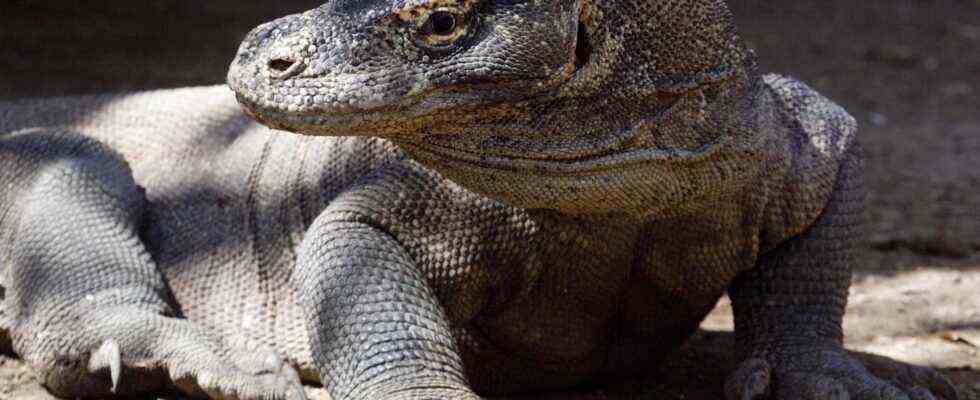Status: 04.09.2021 4:55 p.m.
The red list of threatened animal and plant species is getting longer due to the influence of climate change. Now the World Conservation Union has also put the Komodo dragon on the list. The reason: The lizard’s habitat is noticeably dwindling.
In 1990, British cult author Douglas Adams took a trip around the world on behalf of the BBC to report on animal species threatened with extinction. For the book “The last of their kind” he also stopped off on the Indonesian island of Komodo – home of the infamous Komodo dragon lizard. It lives exclusively on the few small Sunda islands in Indonesia and even then Adams put the population at only a few thousand specimens – of which very few were females. The Komodo dragon was thus acutely threatened with extinction as early as 1990.
The impact of climate change is tangible
Today, 30 years later, the threat to the giant lizard has intensified again – and so dramatically that the International Union for Conservation of Nature (IUCN) put the Komodo dragon on the red list of particularly “endangered” animal and plant species. The reason: The habitat of the lizards has become smaller and smaller due to the rise in sea levels. The fate of the Komodo dragon clearly illustrates the impact of climate change on flora and fauna, according to the IUCN in Marseille. If the trend continues unchecked, a third of the lizard’s habitat is likely to disappear in the next 45 years. The animals outside the Indonesian protection zones are particularly at risk.
The organization has divided endangered species into several endangerment categories on its Red List. “Highly endangered” is level five. In total, the list includes around 140,000 species – 40,000 of which are “critically endangered” according to the IUCN. This year, in addition to lizards and geckos, many turtle species were classified in higher threat categories – for example, Cantor’s giant soft turtle and the giant terrestrial turtle are now considered “critically endangered”.
Tuna stocks recovered
However, the environmental protection organization also had good news this year: Thanks to catch quotas and consistent action against illegal fishing, the global tuna stock has improved significantly after decades of exposure.
The World Conservation Union is currently holding its Species Conservation Congress in Marseille. The organization has more than 1,300 members, including ministries, authorities, nature conservation associations and scientific research institutions. The IUCN Red Lists appear at irregular intervals, but are continuously updated.

